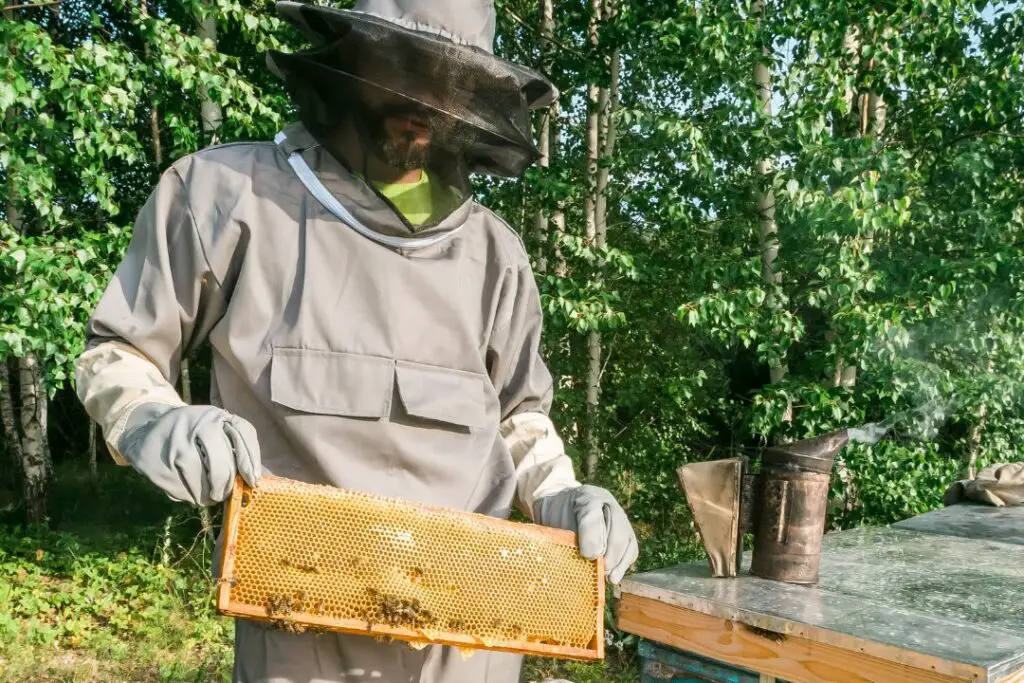Honey, the liquid gold bees tirelessly craft, is central to their survival. It’s their lifeline, their winter blanket, and their energy drink.
But, intriguingly, this essence of their existence might be harming them simultaneously.
*Important note – Feeding a wild bee honey you’ve purchased can introduce nasty diseases and parasites to an otherwise healthy colony and should be avoided at all costs. Check our guide on how to revive a thirsty bee back to life.
How can such an indispensable treasure also be a bee’s downfall? Dive in, and let’s unravel this fascinating paradox.
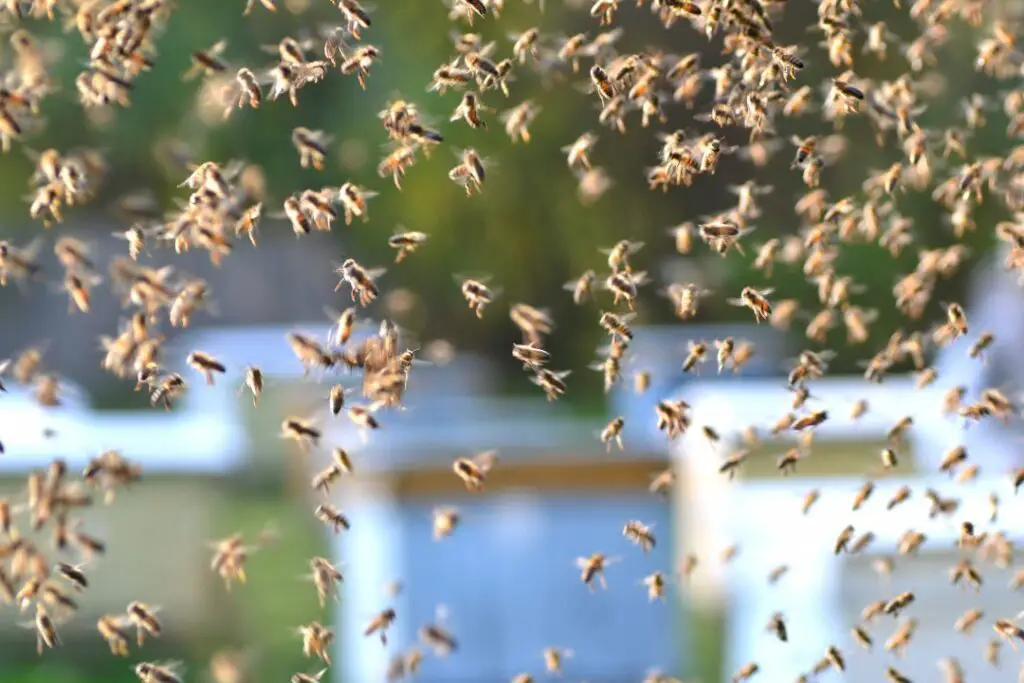
The Importance Of Honey To Bees
Bees don’t just produce honey for our taste buds; it’s the honey bee’s primary food source, essential for survival. A bee’s diet mainly consists of nectar, which they transform into honey and store inside their hives.
The journey from flower to honey begins when worker bees collect tiny drops of nectar from flowers. When brought back to the hive, it undergoes a process where bees evaporate its water content and enrich it with enzymes.
The result? A thick, sugary substance we recognize as honey. This is then stored in honeycombs and sealed with beeswax, preserving it when food sources are scarce.
Bee colonies work tirelessly during blooming seasons, ensuring they harvest honey in ample amounts. The hive acts as a pantry, storing pounds of honey and safeguarding the colony from starvation during winters or periods of floral dearth.
Now we know how it happens in nature, let’s look at how big business has changed honey to a more industrialised process and how it may not be good for bees.
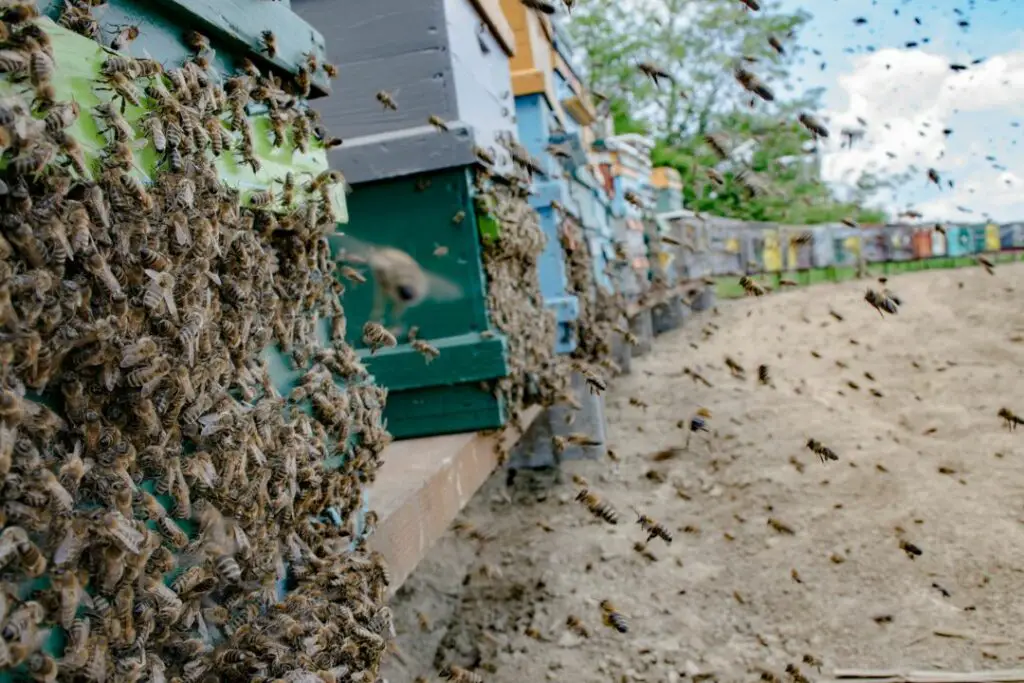
How Does Commercial Honey Production Affect Bees?
In commercial beekeeping, the goal is often maximizing the honey bees produce for human consumption. Beekeepers with knowledge and tools extract honey from bees’ hives, sometimes in vast quantities.
Traditional beekeeping might involve collecting honey once or twice a year. However, this process can be much more frequent in intensive honey operations, potentially depleting the hive’s essential reserves and exploiting the bee population.
Many producers in the bee farming industry replace extracted honey with substitutes like sugar water or syrup. This ensures bees have something to eat, but it’s like replacing a balanced diet with fast food.
The intention might be to keep bees alive, but the nutritional value is nowhere near the honey they produce. for themselves
Raw honey is a complex substance containing various nutrients, antioxidants, and enzymes that benefit honey bees. But sugar water or other substitutes are simple sugars, lacking the depth of nutrition found in honey.
The implications of this replacement diet are profound. Bees consuming substitutes instead are less healthy and vigorous. This suboptimal diet can make colonies susceptible to die-offs, bee diseases, and stressors.
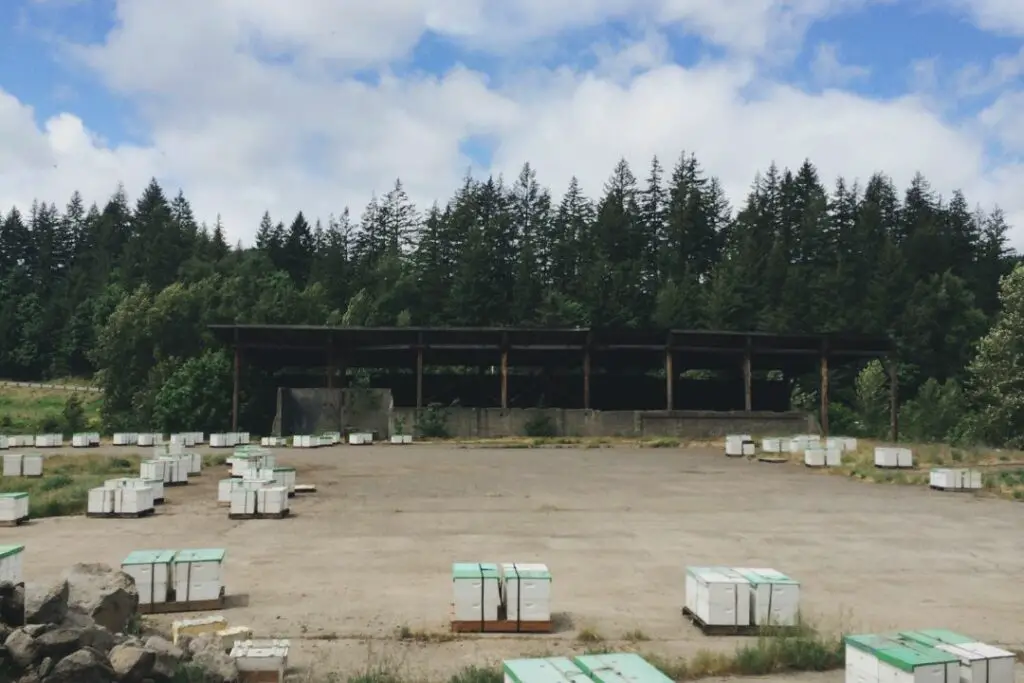
Environmental Stressors
With the growing demand for honey, agriculture has leaned heavily towards monoculture farming—cultivating a single crop extensively over vast stretches of land.
For instance, consider vast fields of almond trees in California, which bloom for only a few weeks each year. To maximize honey harvested during this period, beekeepers may transport thousands of honey bee hives to these almond farms.
However, this poses a problem. In a monoculture environment, bees can access only one type of flower for nectar and pollen. Once the almond bloom ends, the area becomes a bee food desert. This lack of diverse food sources can lead to nutritional imbalances.
Diversity depletion
A diverse diet is as essential for bees as it is for humans. Bees naturally collect nectar and pollen from various flowers in a diverse environment, each offering different nutrients.
But in a monoculture setting, they’re limited to the nutrition of just one type of plant. Think of it as humans eating only rice every meal; while rice is nutritious, consuming it exclusively will quickly lead to nutritional deficiencies.
This is far from their natural diet of wildflowers that help the bees to get the nutritional balance they need form their diet.
Pesticides
In large-scale monoculture farms, the use of pesticides is rampant. These chemicals ensure higher yields by keeping pests at bay, but they come at a grave cost to pollinators like bees.
Pesticides, like neonicotinoids, are known neurotoxins for bees. Even in non-lethal doses, they can impair a bee’s ability to forage, communicate, or navigate. And these pesticides don’t just disappear. They can be taken back to the hive by foraging bees, contaminating the honey stores.
Other hive members can then consume this contaminated honey, leading to a cascade of health issues. Brood fed with contaminated honey or pollen might develop deformities or might not develop at all.
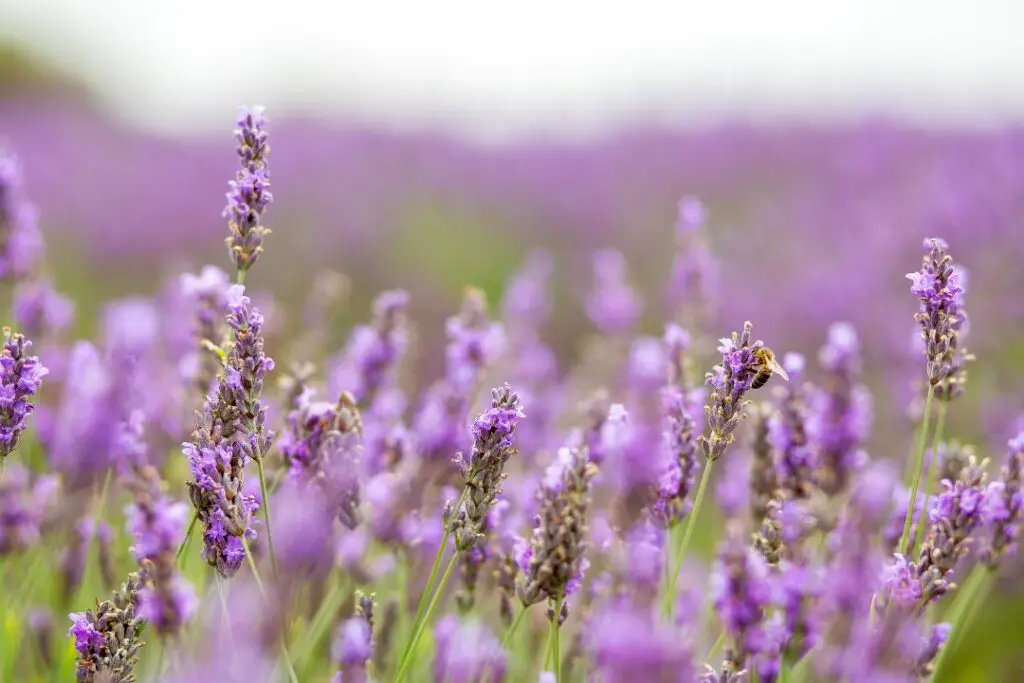
How Overworking Is Bad For Bees
In commercial beekeeping, bees are explored for honey production, often moving hives across vast distances to chase flowering seasons. Imagine being uprooted multiple times a year to unfamiliar environments; that’s the reality for these honey bees.
To better understand, a beekeeper might transport hives from apple orchards in New York in spring to sunflower fields in North Dakota by summer and end in Californian almond farms by winter. Each relocation disrupts the natural rhythm of the bees and exposes them to the various environmental stressors we discussed earlier.
The hidden cost of migration
Each time bees are relocated, they familiarize themselves with a new environment, seek out new food sources, and navigate new threats, all while still being expected to “make honey.” This is not just physically demanding; it can be incredibly stressful for the hive.
Constant shifts can weaken bees’ immune systems, making them more susceptible to diseases. A hive exposed to cooler climates in the north and then quickly shifted to a hotter region might struggle with regulating the hive’s temperature, potentially affecting the brood’s health.
Bees can be exposed to new pathogens or pests with each relocation, increasing the hive’s vulnerability. A bee that’s exposed to mites in one location can carry them to the next, leading to potential outbreaks across different colonies and regions.
CCD
Colony Collapse Disorder (CCD) is where most worker bees in a colony disappear, leaving behind a queen, food, and a few nurse bees. While the exact cause of CCD is still a research subject, the connection between overworking bees and CCD cannot be ignored.
Consistent stress, exposure to various pesticides across different farms, and the aforementioned health implications can all weaken bee colonies, potentially leading to CCD.
Bees don’t just make honey; they also play a pivotal role in pollinating specific crops. Overburdening them with dual responsibilities can be a significant factor in the CCD puzzle.
While relocating hives can be lucrative from a beekeeping perspective, it’s essential to recognize the potential harm and risks posed to our invaluable pollinators. Striking a balance between production and bee welfare is not just an ethical obligation but a necessity for the industry’s sustainability.

In Conclusion
In our insatiable quest for honey from bees, it’s crucial to step back and recognize the delicate balance between our consumption and the welfare of the hardworking honey bee.
As the age-old adage goes, “take only pictures, leave only footprints,” it’s time we apply a similar ethos to beekeeping.
As consumers, we wield more power than we often realize. Making informed, environmentally conscious choices, prioritizing ethically harvested honey, and supporting beekeepers prioritising their bees’ health over profit margins can pave the way for a more sustainable future.
Remember, every time you eat honey is a testament to the symbiotic relationship between humans and bees. Let’s ensure that the narrative is mutual respect, appreciation, and care.

